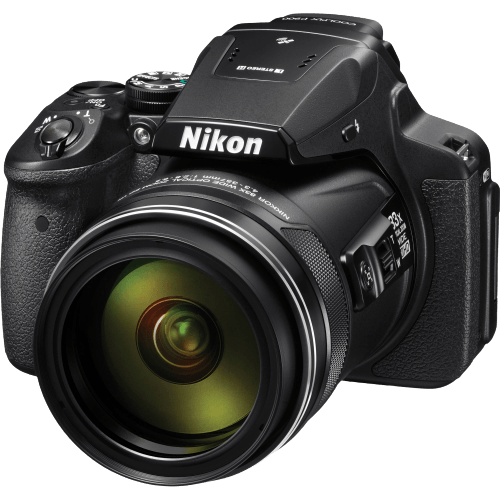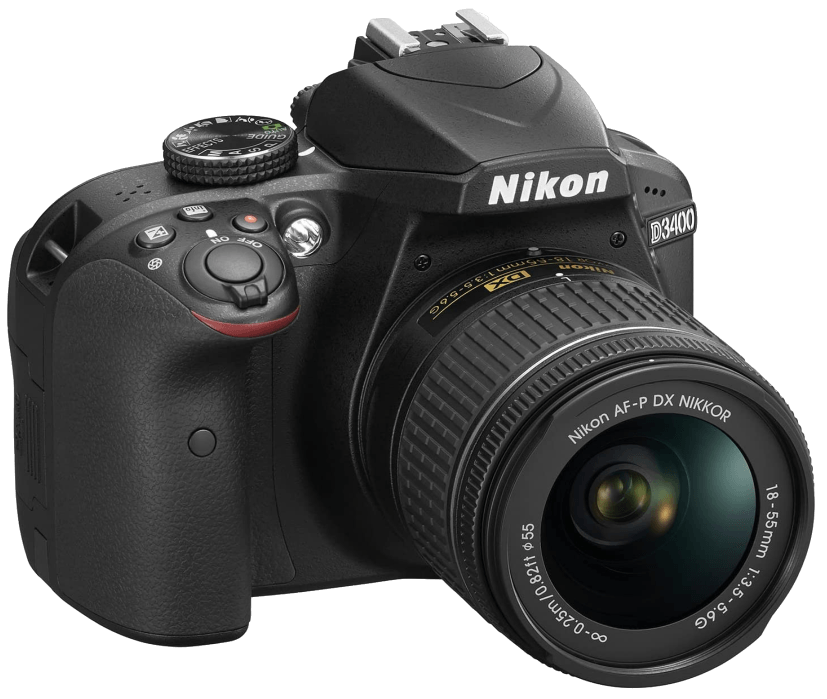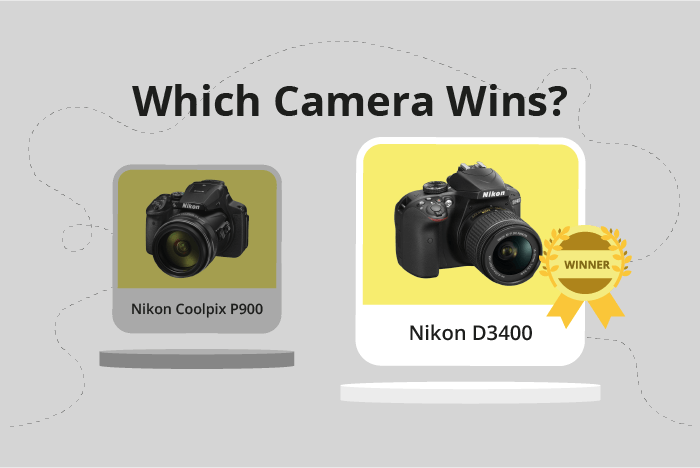Nikon Coolpix P900 vs D3400 Comparison
Nikon Coolpix P900

Nikon D3400

The Nikon D3400 takes the lead with a score of 61/100, outperforming the Nikon Coolpix P900, which scores 48/100. Both cameras share similarities in their release years (2015 and 2016) and launch prices ($599 and $650). However, the D3400, being a DSLR, has advantages over the P900, a bridge camera.
The D3400’s smaller size (124 x 98 x 76mm) and lighter weight (445g) make it more portable than the P900, which measures 140 x 103 x 137mm and weighs 899g. On the other hand, the P900 may appeal to those who prefer a heftier camera for stability.
In terms of performance, the Nikon D3400 proves to be the superior choice due to its higher score, while the Coolpix P900 still offers some benefits for specific users.
Nikon Coolpix P900 vs D3400 Overview and Optics
The Nikon D3400 emerges as the winner in the optics comparison with a score of 65/100, while the Nikon Coolpix P900 scores 53/100. Both cameras share common specifications like a CMOS sensor type and the ability to capture high-quality images.
The Nikon D3400 outperforms the P900 in several aspects. With 24.2 megapixels, it offers a higher resolution than the P900’s 16 megapixels, resulting in crisper and more detailed images. The D3400 also boasts a superior Expeed 4 processor, compared to the P900’s Expeed C2, and a higher DXOMARK sensor score of 86 against the P900’s 72. These factors contribute to the D3400’s better overall image quality. Additionally, the D3400 features an APS-C sensor size and a Nikon F DX lens mount, offering more flexibility and compatibility with a wide range of lenses.
The Nikon Coolpix P900, however, does have some advantages. It has a faster shooting speed of 7 frames per second compared to the D3400’s 5 frames per second, which is beneficial for capturing fast-moving subjects. Moreover, the P900 has built-in image stabilization, making it more suitable for handheld shooting in low light conditions or with longer focal lengths.
In terms of optics, the Nikon D3400 clearly offers better image quality, resolution, and lens compatibility. It is an ideal choice for those who prioritize these aspects in a camera. On the other hand, the Nikon Coolpix P900 provides faster shooting speed and image stabilization, making it a suitable option for users with specific needs or preferences in these areas.
Nikon Coolpix P900 vs D3400 Video Performance
The Nikon Coolpix P900 emerges as the winner in the video capabilities comparison, scoring 61 out of 100, while the Nikon D3400 scores 56. Both cameras share some common video specifications, such as a maximum video resolution of 1920 x 1080 and a maximum video frame rate of 60fps.
The Coolpix P900 has an advantage over the D3400 with its built-in time-lapse functionality. This feature allows users to capture time-lapse videos without the need for additional equipment or software, making it a more convenient option for those looking to create dynamic and creative video content.
On the other hand, the Nikon D3400 offers Full HD video resolution, which is a higher quality than the standard HD offered by the Coolpix P900. This means that the D3400 can produce sharper and more detailed video footage, making it a better choice for those who prioritize video quality.
However, the difference in video resolution may not be significant enough for some users to notice, especially when viewing videos on smaller screens or sharing them on social media platforms. In this case, the convenience of the Coolpix P900’s built-in time-lapse functionality may be more appealing to many users.
Taking these factors into consideration, the Nikon Coolpix P900 is the better choice for those who value convenience and creativity in video capabilities, while the Nikon D3400 is more suitable for users seeking higher quality video footage. The choice ultimately depends on individual preferences and priorities when it comes to video features.
Nikon Coolpix P900 vs D3400 Features and Benefits
The Nikon D3400 emerges as the winner with a feature score of 54/100, outperforming the Nikon Coolpix P900, which has a score of 41/100. Both cameras share several specifications, including a 3-inch screen size and a screen resolution of 921,000 dots. Neither camera offers a touchscreen.
The D3400’s advantage lies in its Bluetooth connectivity, which the P900 lacks. Bluetooth allows for easy transfer of images and remote control of the camera using a smartphone. However, the P900 does offer some features not found in the D3400, such as a flip screen and GPS functionality. The flip screen enables users to shoot from various angles, while GPS tagging allows for precise location information to be embedded in the photos.
The P900 also includes Wi-Fi connectivity, allowing for quick image sharing and remote control of the camera. In contrast, the D3400 does not have Wi-Fi capabilities. Despite these additional features, the P900’s overall lower score highlights the fact that the D3400 is a better camera in terms of features.
While the Nikon D3400 is the superior camera in terms of features, the Nikon Coolpix P900 does have its advantages with the flip screen, GPS, and Wi-Fi. Ultimately, the choice between these two cameras depends on the individual’s preferences and specific needs. If Bluetooth connectivity is a priority, the D3400 is the better option. However, if a flip screen, GPS, and Wi-Fi are more important, the P900 may be the preferred choice.
Nikon Coolpix P900 vs D3400 Storage and Battery
The Nikon D3400 outperforms the Nikon Coolpix P900 in storage and battery with a score of 45/100, compared to the P900’s score of 21/100. Both cameras share similarities in storage, with each having one memory card slot and compatibility with SD, SDHC, and SDXC memory cards. However, the D3400 has a clear advantage in battery life, offering 1200 shots per charge with its EN-EL14a battery, while the P900 only provides 360 shots with its EN-EL23 battery. Neither camera offers USB charging.
Despite the P900’s lower score, it still provides a reasonable battery life for casual photography use. However, the D3400’s significantly longer battery life makes it ideal for extended shooting sessions, professional use, or travel photography. In terms of storage and battery, the Nikon D3400 proves to be a superior choice over the Nikon Coolpix P900.
Nikon Coolpix P900 vs D3400 – Our Verdict
Are you still undecided about which camera is right for you? Have a look at these popular comparisons that feature the Nikon Coolpix P900 or the Nikon D3400:

